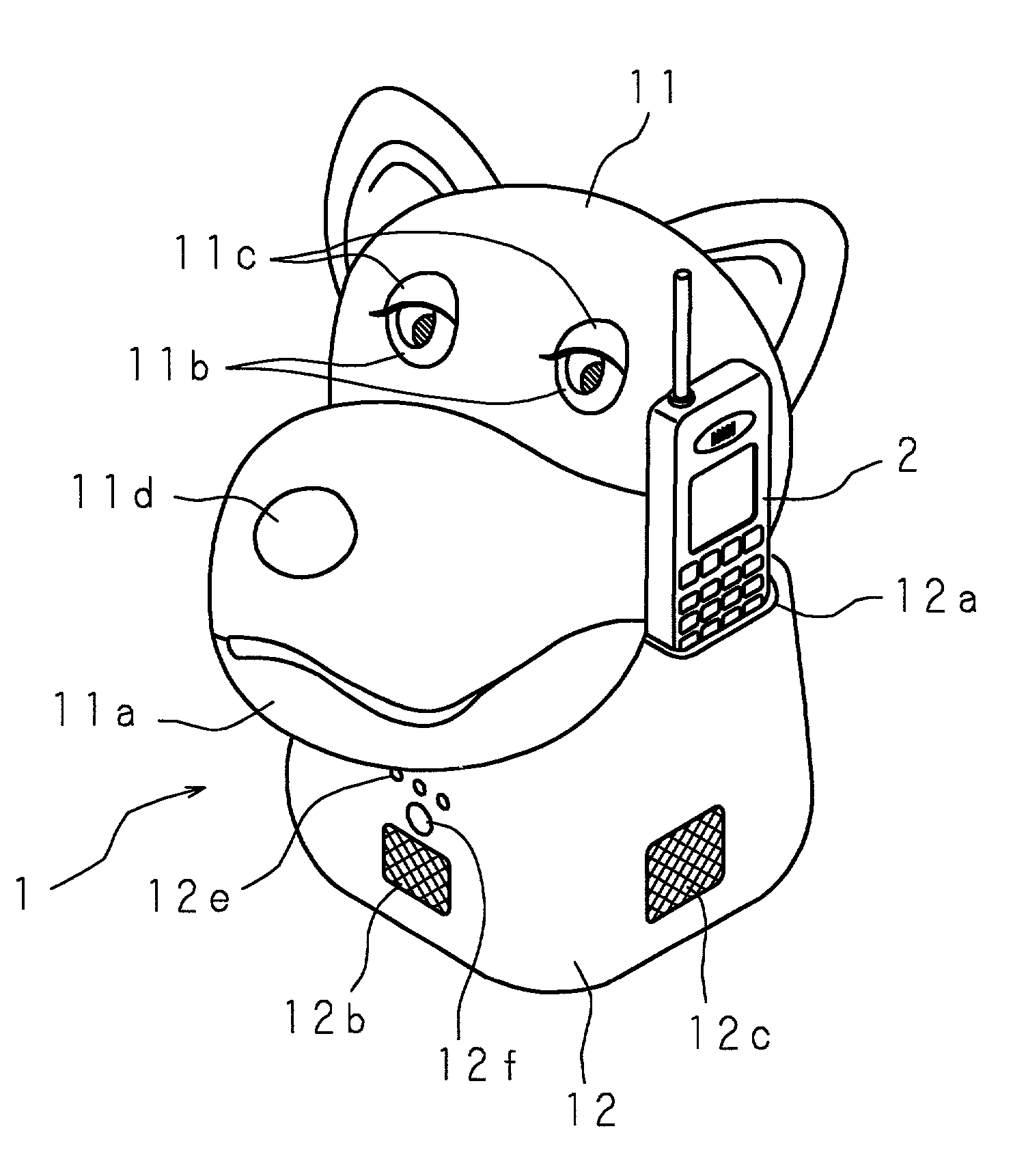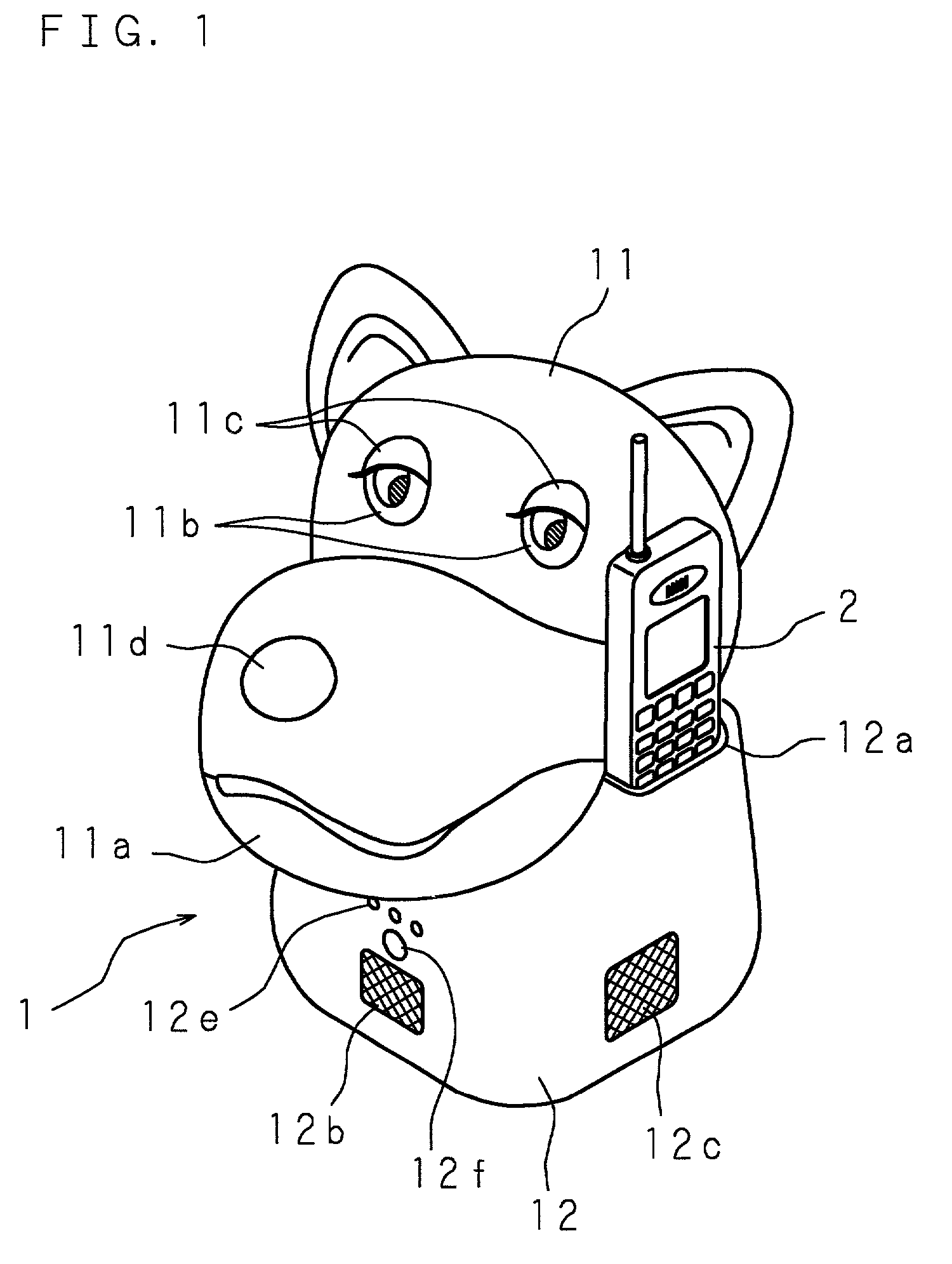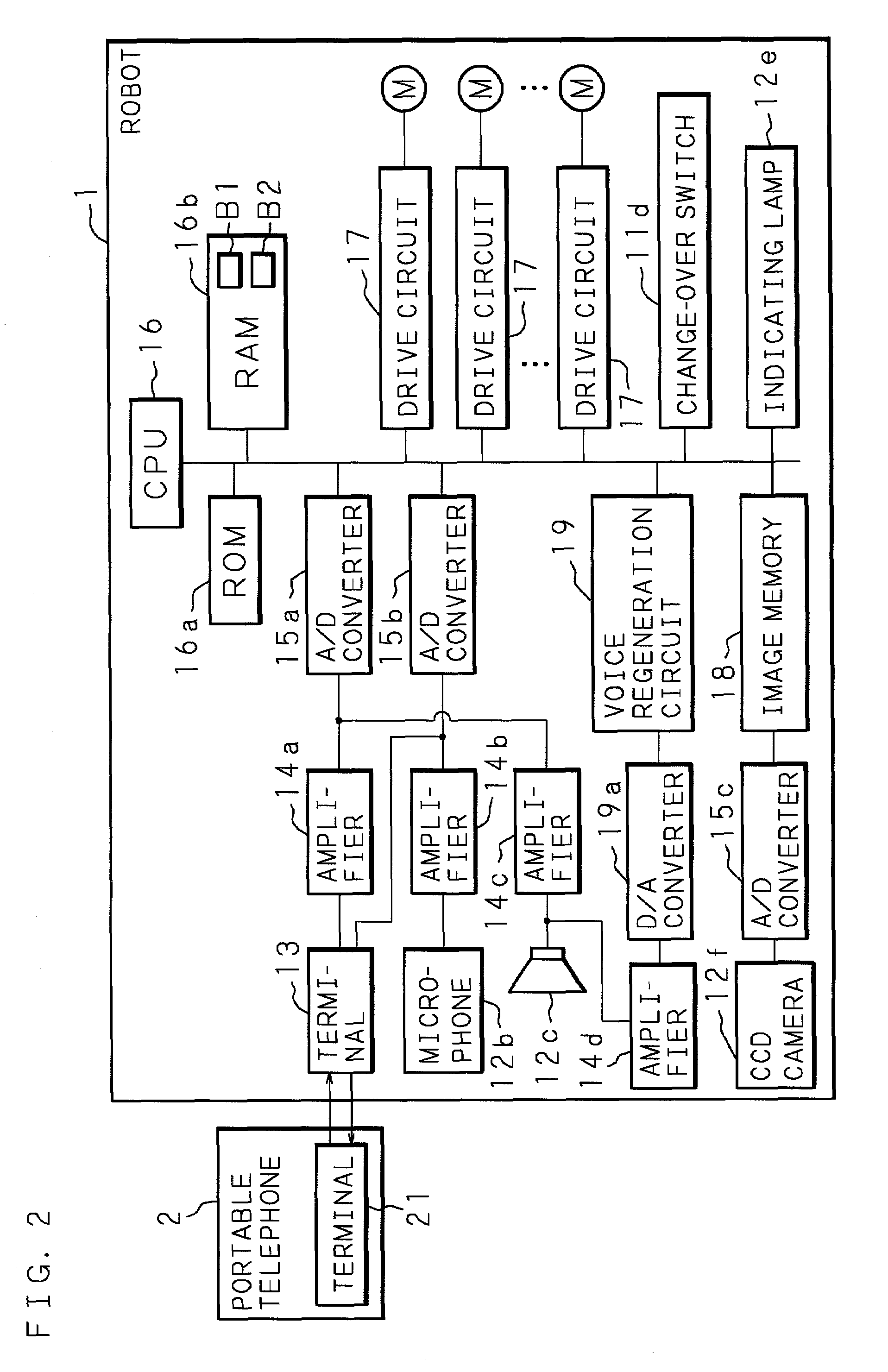Robot controlled by wireless signals
a wireless signal and robot technology, applied in the field of robots, can solve the problems of not acting, user (listener) cannot visually confirm the companion, and user feels strang
- Summary
- Abstract
- Description
- Claims
- Application Information
AI Technical Summary
Benefits of technology
Problems solved by technology
Method used
Image
Examples
first embodiment
[0066]FIGS. 1 and 2 are a perspective view and a block diagram showing an essential structure of a first embodiment of a robot according to the present invention. In FIGS. 1 and 2, denoted at 1 is a robot and denoted at 2 is a portable telephone machine (communication apparatus). The robot 1 has an outer shell of plastic or fabric, etc., and a shape resembling a pet animal, an imaginary animal or the like. The robot 1 is formed by a head portion 11 and a trunk portion 12 and internally comprises operation mechanisms (not shown) which include a plurality of motors M, M, . . . M for a nodding action in which the head portion 11 sways in an up / down direction, a shaking action in which the head portion 11 shakes in a left / right direction, an open / close action in which a mouth 11a formed at the head portion 11 opens and closes, an action of eye balls 11b and 11b formed at the head portion 11 in which the eye balls 11b and 11b roll in the up / down direction and the left / right direction, a ...
second embodiment
[0165]FIG. 15 is a schematic diagram showing an essential structure of a second embodiment of a robot according to the present invention. A robot system according to the second embodiment comprises a robot 1, a computer 3 which functions as a communication apparatus and a portable telephone 4. The robot 1 comprises a radio-communication unit 110 which has a communication function such as PHS data communication and Bluetooth.
[0166]FIG. 16 is a block diagram showing a structure of the robot 1 according to the second embodiment. The robot 1 outputs a control signal from a CPU 16 to the drive circuits 17 in response to command data received at the radio-communication unit 110. This enables to remotely operate the robot 1. FIG. 17 shows one example of the command data for the robot 1. The command data are formed by text commands of ASCII codes and parameters which express the amount of motion, a traveling speed, a rotational angle, a rotation angle speed, etc. In the command data “MWSB 2...
third embodiment
[0190]FIGS. 23 and 24 are a perspective view and a block diagram showing an essential structure of the third embodiment of the robot according to the present invention. Portions which are similar to those in the structure of the robot 1 according to the first embodiment will be denoted at the same reference symbols but will not be described.
[0191]An infrared rays sensor 12d is disposed to the side of the CCD camera 12f in a predetermined distance. The infrared rays sensor 12d is connected with an A / D converter 15d, and the A / D converter 15d is connected with the CPU 16. The infrared rays sensor 12d outputs an analog signal which corresponds to the quantity of infrared light around the infrared rays sensor 12d, and the analog signal is converted by the A / D converter 15d into a digital signal and fed to the CPU 16.
[0192]In FIG. 24, denoted at 110 is a radio-communication unit which has a communication function such as PHS data communication, Bluetooth or the like. The portable telepho...
PUM
 Login to View More
Login to View More Abstract
Description
Claims
Application Information
 Login to View More
Login to View More - R&D
- Intellectual Property
- Life Sciences
- Materials
- Tech Scout
- Unparalleled Data Quality
- Higher Quality Content
- 60% Fewer Hallucinations
Browse by: Latest US Patents, China's latest patents, Technical Efficacy Thesaurus, Application Domain, Technology Topic, Popular Technical Reports.
© 2025 PatSnap. All rights reserved.Legal|Privacy policy|Modern Slavery Act Transparency Statement|Sitemap|About US| Contact US: help@patsnap.com



